Understand the timeline of what your baby sees
(Visual milestones and development)
Authors: Ms Aaisha, Prof. Monica Chaudhry, Dr Meena Kharat
Reviewed by Dr Anitha Aravind

Figure 1 : Your child’s vision is no child’s play!
Babies at birth do not have developed vision. Like walking and talking, visual abilities also develop with increasing age. The eyes and visual system grow over time; hence babies at birth do not have adult-like vision.
Vision is critical to a child’s development. Any problems in eyes and vision could result in developmental delays. So, it is crucial to detect vision-related issues as early as possible to provide appropriate interventions.
Parents play a vital role in the visual development of a child by watching for signs of visual problems, seeking professional help with the eye care practitioner at the earliest and also engaging the child in age-appropriate activities.

Figure 2: Engaging the child in age-appropriate activities is important for good development
The ability to focus and coordinate eye movements happen over time. Rapid visual development occurs during the first three months of life, which is called the critical period of development and extends up to 7 years of age.
The following table (Table 1) could be used as a guideline to understand the expected age-appropriate visual milestones in children. However, it is important to note that every child is different and reach milestones at different ages, so the table serves as a reference for parents to notice any abnormality or visual problems to seek professional help at the earliest
Table 1: Visual Milestones
| Age | Milestones |
| Birth | The infant blinks in response to a bright source of light If one attempts to touch the eye, the infant will react with a sudden blink Eyes may appear squinted, remember, the coordination between the eyes is yet to develop. They can stare at objects very close to the infantThe infant stares at a stationary object and then follows a moving targetTheir primary focus is on objects 8 to 10 inches from their face or the distance to the parent’s face. |
| 1 month | Watches the parent closelyCan stare at well-contrasted black and white imagesCan follow an object up to 90 degrees |
| 2 to 3 months | Will look at hands. Follows lights, faces and objects of interest |
| 4 to 5 months | Attempts to reach objects of interest with hands Recognizes familiar items of the surrounding like bottles, mobile etc. Will look at self in the mirrorStarts playing with their own hands. |
| 5 to 7 months | Can look at objects placed at a longer distance Can grasp toysStarts head movements to look for objectsLikes certain coloursWill touch image of self in mirror |
| 7 to 11 months | Can stare at small objectsPlays peek-a-booGrasp objects and toys with thumb and forefinger |
| 11 to 12 months | Can watch objects that are moving fast |
| 12 to 14 months | Able to place shapes in proper holesInterested to look at pictures Recognizes familiar objects and pictures in books, may point to some objects when asked, “Where is the …?”Points and gestures at objects and actionsRecognizes their own face in the mirror |
| 18 to 24 months | Highly interested in exploring their environment and in looking and listening. Starts scribbling with pens and markers |
| 36 to 38 months | Adult level visual acuity on eye examination |
When to take your child for an eye examination?
The following are some of the indications for eye and vision problems that one can notice and take the child for a comprehensive eye examination at the earliest.
– Any inward or outward turning (deviation) of eyes
– Excessive watering of eyes
– Any discharge from the eyes
– Sensitivity to light
– Does not follow a bright moving object
– Lack of hand and eye coordination
– Watching television or holding a book close to eyes
– Any white spot in the eye
– Family history of eye diseases or eyeglasses for myopia
When in doubt, it’s always better to consult an eye care practitioner to ensure that the child’s vision and development are age-appropriate. Timely intervention is critical to prevent lifelong damage to eyes and vision.
How early can a child be taken for an eye examination?
Age is not a barrier to an eye examination. Several tests are available to screen the eyes for any abnormality from newborn to older children. Even if there is no apparent eye or vision problem, it is good to have a consultation with the eye care practitioner to rule out any eye and vision problems for your 6-month-old.
Role of the parent in a child’s visual development
– Watch for signs of eye and vision problems
– Seek professional help at the earliest when any eye or vision problems are noticed
– Stop seeking advice from friends and family for treatment options and seek an appointment with the eye care practitioner
– Introduce age-appropriate activities to stimulate the child’s vision like the following
– Decorate the room with bright and contrasting colours and hang colourful mobile above the crib
– Buy bright coloured toys and encourage the child to reach out to them when they are about six months of age
– Toys like building blocks help in developing the hand to eye coordination and should be introduced at the right age

Figure 3: Happy eyes, Happy kids!
Conclusion: It is important to understand that visual development is critical in the child’s overall development, and any delay in visual development could lead to developmental delays. Timely intervention is the key to a child’s development.
